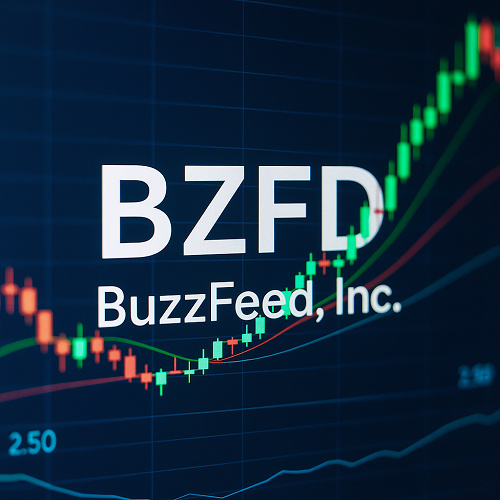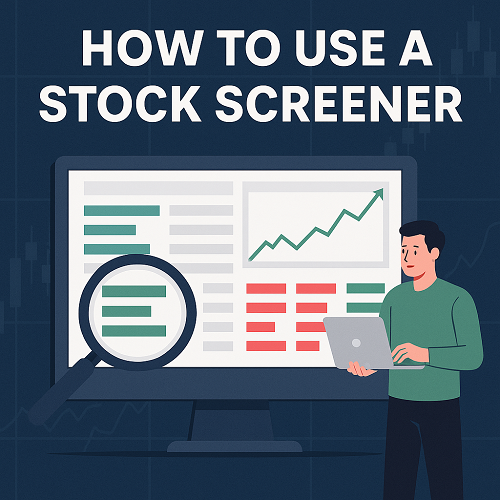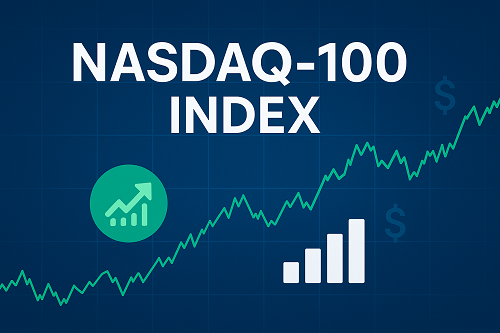BuzzFeed operates as a digital media and entertainment company. Its platforms deliver content across owned & operated (O&O) sites (BuzzFeed, Tasty, HuffPost) as well as third-party channels. Revenue streams include display advertising, video ads, branded content, licensing, and content partnerships. With its diverse operations, those interested in BuzzFeed stock should consider how these revenue streams contribute to the company’s financial health.
This article provides a deep dive into BZFD’s fundamentals, technical outlook, risks, and trading strategies.
Business Model & Competitive Positioning
Core Verticals & Revenue Streams
- Owned & operated content: BuzzFeed’s main site, along with verticals such as Tasty (food content) and HuffPost, produce original written, video, and viral content.
- Advertising & monetization: The company monetizes via display and programmatic advertising, video ads, branded content, and sponsorships.
- Licensing, partnerships & syndication: Content licensing, TV adaptations, and partnerships with platforms (e.g. YouTube, social media) provide additional revenue.
Competitive Landscape & Moats
BuzzFeed competes in the crowded digital media space with peers such as Vox Media, Vice Media, Group Nine Media, and legacy media transitioning to digital. Its advantages include:
- Brand recognition & viral content engine: BuzzFeed has built strong brand equity, especially among younger demographics, via quizzes, lists, social media virality.
- Multi-platform reach: Strong presence on YouTube, Instagram, TikTok, and other social channels help distribute content widely.
- Data-driven content optimization: Ability to test content, adjust formats, and respond rapidly to trends.
- Scale & cost leverage: Larger scale offers negotiation power with advertisers and spreads fixed costs.
However, challenges include shifting ad budgets (especially in macro downturns), algorithmic dependencies (social platforms controlling distribution), and content differentiation pressures.
Financials & Key Metrics
Recent Income Statement Trends
(Annual & trailing-twelve-month basis)
- Total Revenue: ~$194.2M (2024 TTM) vs ~$189.9M (2023).
- Cost of Revenue: ~$107.7M (2024)
- Gross Profit: ~$86.5M (2024)
- Operating Expense: ~$98.2M (2024)
- Operating Income: –$11.7M (i.e. operating loss)
- Net Income: +$9.6M (2024), contrast to a net loss of –$10.1M in 2023
Key Observations:
- While revenue has inched upward, operating expenses remain high, keeping the company in near break-even / modest loss territory.
- The net income positive in 2024 may be due to non-operating gains, tax effects, or one-time items (less sustainable).
- Gross margin (~44–45%) is moderate for a digital media business (given content and distribution costs).
- EBITDA, normalized income trends show volatility and negative values in prior years.
Balance Sheet & Cash Flow (Highlights)
While Yahoo’s “Financials” tab focuses on revenues/expenses, the “Key Statistics” and filings should be consulted for:
- Total debt / leverage and interest burden
- Free cash flow generation or burn
- Cash holdings & runway
- Working capital / receivables / payables trends
Investors should carefully inspect the company’s latest 10-K / 10-Q filings for footnotes on debt covenants, liquidity, and one-time items.
Valuation & Key Ratios
From Yahoo’s “Key Statistics” page:
- Price/Earnings (P/E) ratio (if applicable)
- Forward estimates of earnings
- Price/Sales (P/S)
- Price/Book (P/B)
- Shares outstanding, float, insider ownership
- Institutional holdings & recent insider transactions
Given the marginal profitability and structural uncertainty, multiples should be viewed with caution. The P/E might be misleading if driven by non-recurring items.
Recent Developments & Risks
Reverse Stock Split & Corporate Restructurings
In 2024, BuzzFeed announced a 1-for-4 reverse stock split, consolidating shares likely to maintain compliance with listing rules or to improve per-share metrics.
Nasdaq Compliance / Audit Committee Issue
BuzzFeed filed an 8-K listing notice after its audit committee fell below the required minimum of three members, triggering a non-compliance notice from Nasdaq. The company subsequently reappointed a member to restore compliance.
Such events highlight corporate governance risks and the fragility of small-cap media firms in meeting exchange rules.
Revenue & Profit Volatility
Quarterly revenue results have been uneven. For example, in Q1, BuzzFeed reported ~$44.8M in revenue. Q4 revenues were ~$75.7M.
This volatility reflects exposure to advertising cycles, platform algorithm changes, and macroeconomic ad budget swings.
Secular & Structural Risks
- Ad revenue downturns in economic slowdowns
- Dependency on major platforms (Google, Meta, TikTok) for traffic
- Changing consumer habits, increasing competition from short-form video / AI-driven content
- Governance, regulatory, and listing risks (as seen)
- Dilution risk if capital raises are needed
Technical / Chart Analysis
A robust trading/investment view should combine fundamentals with technical signals. Using chart data from Yahoo Finance’s interactive chart:
Price Patterns & Trends
- The share price over 2025 has generally fluctuated in a band between ~$1.70 and $3.00 (post-reverse split adjustment).
- There is no strong sustained trend upward; more sideways / range trading.
- Support zones: ~$1.60–1.80
- Resistance zones: ~$3.00 region (pre-split equivalent)
Momentum & Indicators to Watch
- Moving averages (50-day, 200-day) — look for crossovers for momentum shifts
- Volume spikes on breakouts — validate structural moves
- Relative Strength Index (RSI) — identify overbought / oversold zones
- MACD / histogram signals — to confirm trend momentum
- On-balance volume (OBV) — to see accumulation or distribution
If a decisive breakout above a resistance zone on strong volume occurs, it may trigger momentum moves. Conversely, drop below support zones could lead to downtrends.
Valuation & Scenario Forecasts
Given the volatile nature and relative immaturity, a scenario-based valuation approach is prudent.
Bear Case
- Ad markets weaken, revenue declines
- Platform algorithm changes reduce traffic
- Need for capital raise leads to dilution
- Operating losses remain or expand
Under this scenario, BZFD might retrace toward $1.20–$1.50 (post-split adjusted) or worse, if confidence erodes.
Base Case (Moderate Growth)
- Revenue grows at mid-single digits annually
- Operating efficiencies start to kick in
- Modest consistent profitability or neutral cash flow
- No major dilution
In this scenario, valuation multiple (e.g. 1.0×–2.0× revenue) could imply a stock price range of $2.50–$4.00 (adjusted basis).
Bull Case
- Strong ad recovery and structural growth
- Viral content success or breakout intellectual property / licensing deals
- Strategic partnerships or acquisition (video, AI, new vertical)
- Sustainable margin expansion
Under optimistic assumptions, a multiple of 2–3× revenue or P/E multiple expansion could push the price meaningfully higher (e.g. $5–$8+ region, subject to capital structure).
Note: These are illustrative ranges. Real outcomes depend critically on execution, macro environment, and capital markets.
Investment Thesis & Catalysts
Here are potential bullish catalysts and strategic advantages if things go right:
- Ad Market Rebound: A return of advertiser confidence post-recession would lift digital ad spend.
- Viral Content Hits / Franchise IPs: A breakout video series, branded show or licensing success could unlock upside.
- Platform Partnerships / Monetization Innovations: Direct subscriptions, premium content, AI-based personalization, e-commerce integration.
- Cost Discipline & Margin Improvement: Reducing fixed costs, optimizing content creation, improving yield per visitor.
- M&A & Strategic Deals: BuzzFeed could acquire or partner with technology or content platforms to accelerate growth.
- Strong Q2–Q4 Earnings Surprise: If earnings beat consensus and show sustainable growth, sentiment could shift.
From a trading perspective, a confident breakout above key resistance zones on volume could attract momentum players and trigger further upside.
Risks & Red Flags
- High operating costs and thin margins: Vulnerable to any revenue decline.
- Platform algorithm dependency: Overreliance on social/Google traffic exposes the business to algorithm changes.
- Dilution risk: Need for capital infusions could impair share value.
- Corporate governance & compliance lapses: As seen with listing risk and audit committee shortfall.
- Advertising cyclicality: Digital ad budgets are among the first to be cut in downturns.
- Competition & content saturation: Many players vying for attention in media.
- Regulation / privacy & data risks: Changes in privacy law or ad tracking constraints could hamper monetization.
Any investor/trader in BZFD must monitor these risks vigilantly.
How to Trade BZFD: Strategies & Execution
Depending on your risk tolerance and horizon, here are possible strategies:
Long-Term Hold / Core Position
- If you believe in the digital media rebound and BuzzFeed’s repositioning, consider a small core position.
- Use dollar-cost averaging to mitigate volatility.
- Monitor quarterly earnings meticulously.
- Set a stop-loss (e.g. 20–30% below entry) to manage downside.
Momentum / Swing Trades
- Watch for a breakout above resistance with strong volume — enter a swing trade.
- Use technical confirmation (RSI, MACD, moving average cross).
- Place stop just below support or recent swing low.
- Target profits in incremental levels (e.g. partial profit at resistance zones).
Option Strategies (If available & permissible)
- Long calls: to play upside with limited capital — premiums may be high in volatile name.
- Call spreads: limit downside while capturing upside.
- Put hedges: if long, protect against tail risk.
Because BZFD is a small-cap / micro-cap name, option liquidity may be limited; check bid-ask spreads and implied volatility carefully.
Risk Management
- Position sizing is critical — don’t overallocate to a highly volatile name.
- Use stop-losses and trailing stops.
- Monitor broad market / ad sector cycles — deteriorating macro or digital ad contraction can pull the stock downward regardless of operational progress.
- Stay updated on company governance, SEC filings, and 8-K announcements.
Conclusion & Final Outlook
BZFD (BuzzFeed, Inc.) is a challenging but potentially rewarding play. It sits at the intersection of media, content, and technology, with upside if it can stabilize its financials, monetize better, and navigate structural headwinds. But risks are nontrivial.
From a fundamental standpoint, the company is not yet a comfortable “safe bet” — operating losses, governance issues, and ad sensitivity raise caution flags. On the flip side, if execution aligns with market recovery and content innovation, it could generate meaningful returns.
Outlook Summary:
- Base case: Modest growth, incremental improvement, likely range-bound with periodic upside.
- Bull case: Strong execution, new monetization breakthroughs, and multiple expansion.
- Bear case: Ad market setback, dilution, operational underperformance.
For traders, BZFD offers opportunities for range trades and momentum breakout plays — with strict risk controls. For long-term investors, it’s a speculative, high-risk / high-reward name, suited only for those with conviction and tolerance for volatility.





 XAUT-USD
XAUT-USD  AMD
AMD  MARA
MARA  SHOP
SHOP  BULL
BULL  CL=F
CL=F